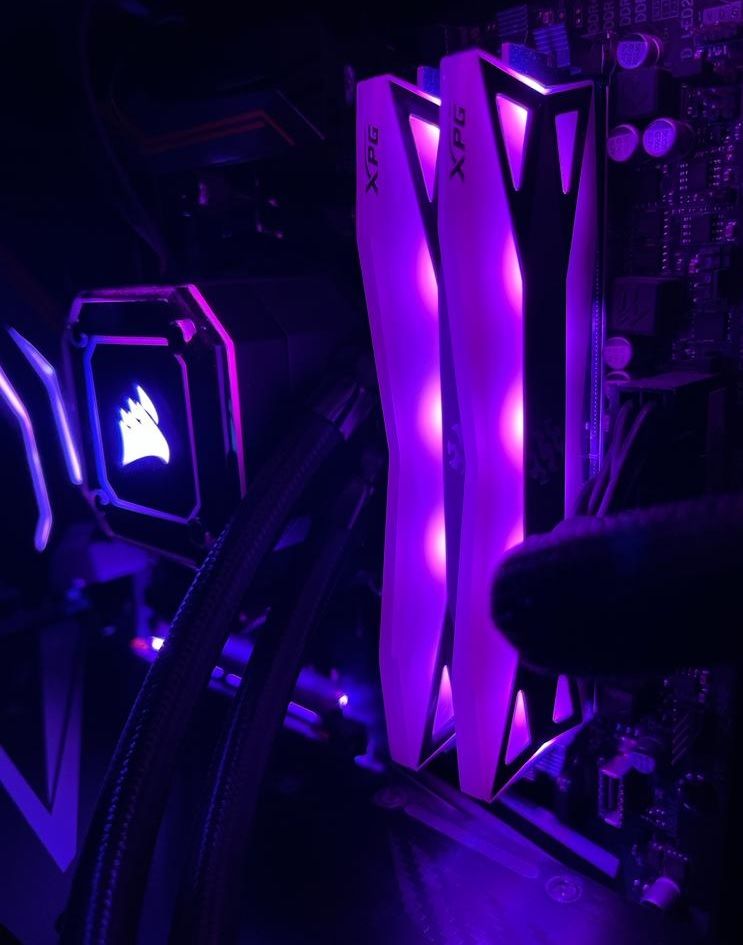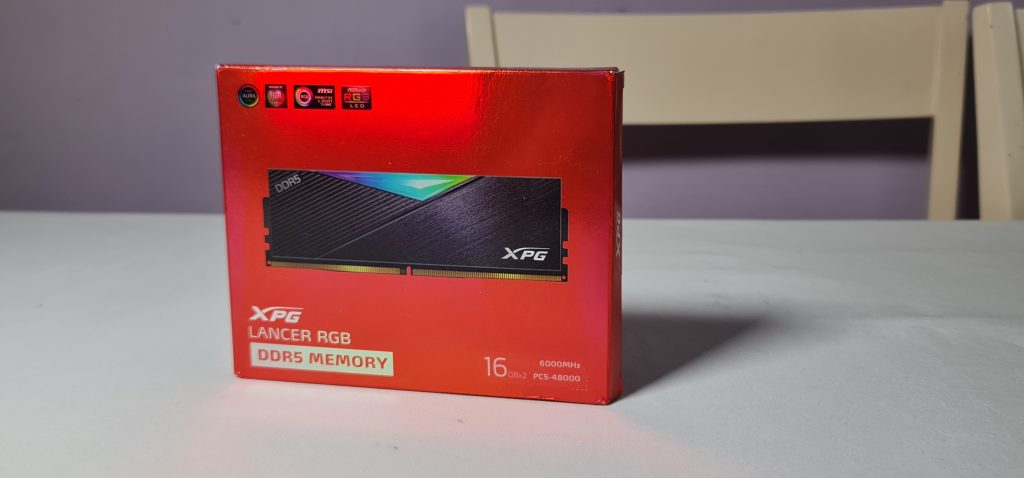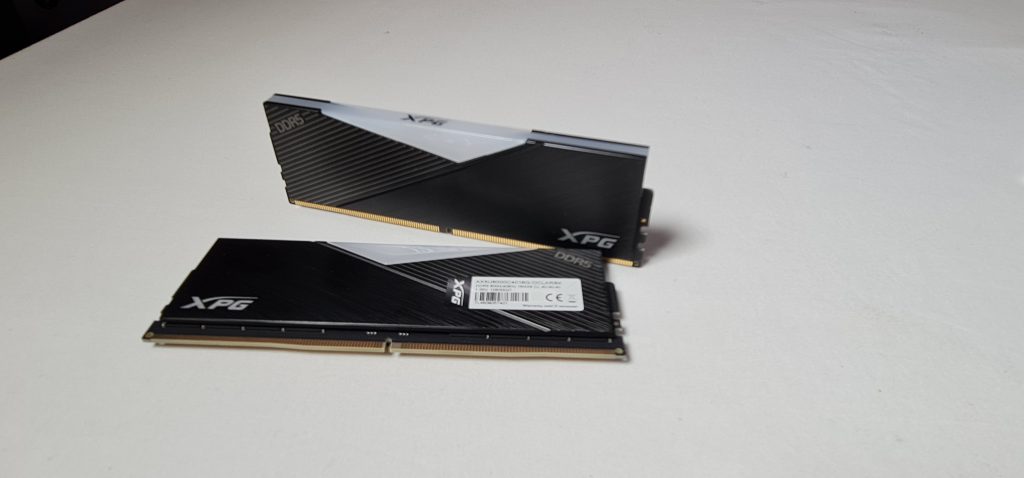Whether you’re new to building PCs or a seasoned pro, you will know there are a few parts you need before you start playing all the lovely games available on platforms like Steam. A CPU, motherboard and PSU are all key components, but they won’t operate without storage and memory. Whilst you’re probably thinking these two things sound the same, storage will refer to your HDD or SSD, and memory refers to your RAM, whether that be DDR3, DDR4 or DDR5.
The key difference between memory and storage is that memory is your computer’s processing memory. It helps the CPU which is essentially the brain, by keeping track of the operations it is running. Better RAM can perform more tasks at any one time, and also processes actions at a faster speed. Whereas storage is more for storing files and programs, this is where you stupidly sized files for the likes of Halo: Infinite and Call of Duty: Warzone will be kept.
Now, we will cover the differences between a hard drive (HDD) and a solid-state drive (SSD) another day. Today, we’re here to look at RAM, and more specifically, the differences between DDR4 and DDR5 RAM, and whether it is worth upgrading from one to the other.
To kick things off, let’s look at the differences.

DDR4 vs DDR5: Key differences
Much like any tech nowadays, it is constantly evolving. Improvements are being made in terms of size, stability and speed. DDR4 is probably the currently most used version of RAM right now, although there will be many still using DDR3. But DDR5 has now hit the market, and it’s the new level for people to reach for those who want their PC to be top of the line. But how do the two differ?
Data Rate and Clock Rate
The clock rate is typically an indicator of the processor’s speed, which is calculated by the frequency that the clock generator can generate pulses. Essentially, like how our brain sends and receives signals, this measures how quickly that is happening. The data rate is the data being processed on the clock signal, and with DDR RAM, which means double data rate, it does this twice as quick because it transfers the data as the clock signal rises and falls simultaneously.
The data rate and clock rate differ quite drastically between these two types of RAM. Now, we’ve reviewed a couple of pieces of DDR4 RAM in the past, including the XPG Gammix D20 and the XPG Spectrix D60G, both of which performed extremely well during testing. But a lack of a compatible motherboard meant for our tests of some DDR5 RAM, we had to send it off to our friends at Enos Tech who checked out the XPG Lancer RGB DDR5.

But even without the relevant tests, you can see a difference from the off of what these different types of RAM are capable of. When you buy a stick of DDR4 RAM, you’ll often see it labelled as DDR4-3200MHz or DDR4-3600MHz, which was the case for the two we reviewed above respectively.
This shows that the two versions we have reviewed have a maximum capacity of 3200MHz and 3600MHz, although your PC may require overclocking of some sort to achieve that because standard values are usually half that. Which are still more than capable of running games perfectly well.
Now, if we look at DDR5 RAM such as the XPG Lancer RGB DDR5 that we sent to our pals at Enos Tech, we can instantly see the potential is much higher reaching processing speeds of up to 8400MHz. That’s more than double what was capable with our DDR4 RAM, and although it’s not necessary to have it, if you’re looking to future proof your PC, it will clearly do you better in the long run than DDR4 will.
Capacity
When it comes to DDR4 RAM, you’ll find that no matter if you buy 16GB, 32GB or 64GB, it’ll be comprised of multiple units rather than just one. So with 16GB RAM, you’ll likely receive two sticks of 8GB, or for 64GB, you’ll have four sticks of 16GB RAM. That is because the maximum capacity of DDR4 is 16GB, and rather than overload one unit, manufacturers try to split it across multiple components to share the workload.

Now, when we head to DDR5 like the XPG Lancer RGB DDR5, it offers a much larger capacity, able to cope with up to 64GB per stick. Meaning for the insane individual who wishes to max out their slots on their motherboard, they could potentially have 256GB of DDR5 RAM. Why anyone would need that is beyond me right now, but some people just like to show off right? And I suppose if you’re able to, why not go all out in taking your PC to the next level. Imagine how many browser tabs in Chrome you could have open at once.
Power
So for DDR4, the motherboard much like with DDR3 powers the RAM. And they can be quite intensive, so some sticks of RAM can use up a fair bit of juice. But DDR5 has been optimised so that it operates more efficiently. That’s because there is a power management integrated circuit built in which prevents power from being wasted and stops the unit from being as resource-intensive, despite offering more impressive speeds.
It’s likely this won’t make too much of a difference for many people, but again, for those wanting to build the ultimate gaming PC, every little bit you can get out of your PC helps.
DDR4 vs DDR5: Should you upgrade?
Well, if you’re currently on DDR3 and you’re looking to upgrade your rig, then DDR5 is definitely a smart choice. The question is would DDR4 be as smart of a move? As you can see above, the differences are vast. Not only will they operate faster and more efficiently, but they also have much larger capacities. Meaning, in terms of future-proofing, if you buy them now, they will last a lot longer than if you are stuck with DDR4. That said, it will require purchasing a compatible motherboard.
This leads to our next point, cost. The chances are if you are upgrading your PC, your motherboard will need replacing, and this is an additional cost on top of the RAM. I upgraded my PC a couple of years back, and I paid about £125 for an MSI MAG B550M MORTAR at the time. Now, if you’re going to go for a DDR5 compatible motherboard, it is going to be a little extra. Not much more, but it is an additional cost of easily at least £25.

Then you have the cost of the RAM too. Now for the XPG Spectrix D60G we reviewed, you’re looking at around £70 to £80 online at the moment. For even some basic DDR5 RAM you’re looking at a minimum around the £90 to £100 area, with better pieces such as the XPG Lancer RGB DDR5 fetching around between £120 to £130.
So is the additional cost worth upgrading from DDR4 to DDR5? Well, actually, yes. You’ll probably end up spending less than an extra £100 in total, not including if you splash out on a new CPU too. When we look at the differences above, I’d say is good value for the jump in improvement that we can see. Although if you’re on a budget, DDR4 will do you nicely too. Plus, by the time you next upgrade, we’ll no doubt see DDR6 RAM arriving on the scene.
Closing thoughts
As we can see, the advancements in technology really have come a long way, offering us much more bang for our buck. For those on a budget, it’s not a necessity to upgrade to DDR5 as DDR4 will be more than adequate for you, especially over the coming years if you have enough installed. But with the lifespan of this tech being much more beneficial long term, it could be one of those investments where you spend a little more now to save a lot more in the future.
You can purchase the XPG Lancer RGB DDR5 on Amazon now for £129.51, or via a number of other online and retail stores. For more opinion pieces like this, click right HERE, and don’t forget to check out our tech reviews HERE.